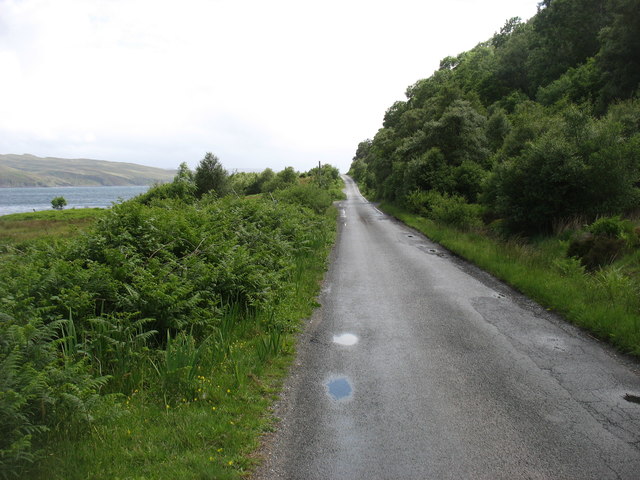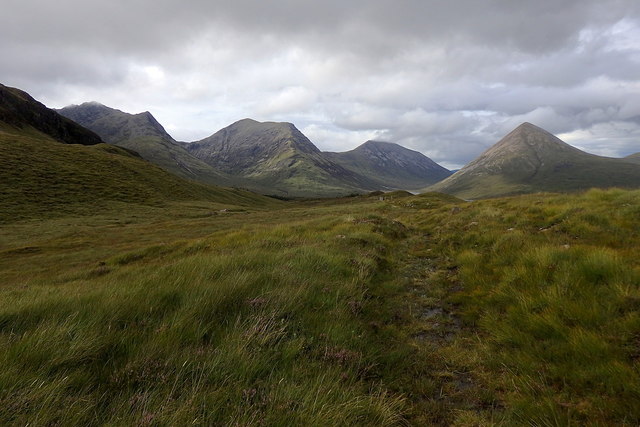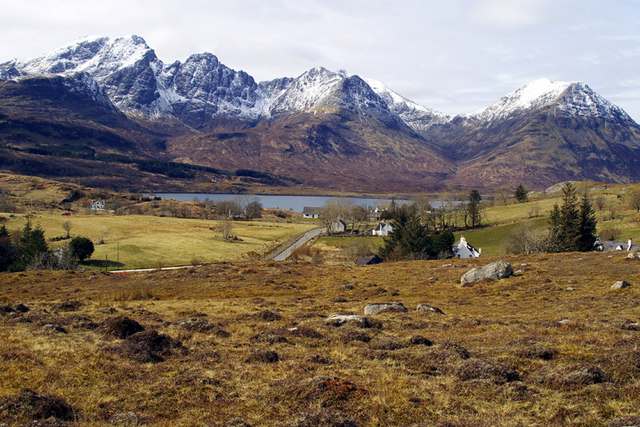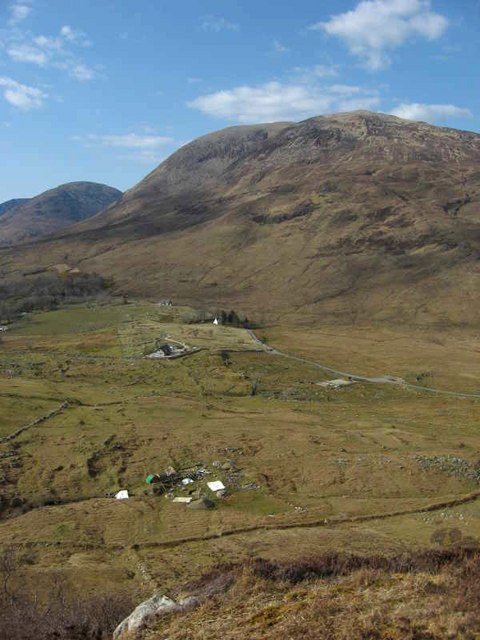Nead an Fhìor-Eòin
Hill, Mountain in Inverness-shire
Scotland
Nead an Fhìor-Eòin

Nead an Fhìor-Eòin, also known as "The Nest of the Golden Eagle," is a prominent hill located in Inverness-shire, Scotland. Standing at an elevation of approximately 871 meters (2,857 feet), it is considered one of the most stunning hilltops in the region. The hill is a part of the Cairngorms National Park, which is renowned for its natural beauty and rich wildlife.
Nead an Fhìor-Eòin offers breathtaking panoramic views of the surrounding landscapes. From its summit, visitors can marvel at the vast expanse of the Scottish Highlands, with its rolling hills, deep valleys, and shimmering lochs. On a clear day, the distant peaks of the Cairngorms can also be seen, adding to the allure of the scenery.
The hill's name, "The Nest of the Golden Eagle," reflects its significance as a habitat for these majestic birds of prey. The area is known to be a breeding ground for golden eagles, and lucky visitors may catch a glimpse of these awe-inspiring creatures soaring through the skies.
Hiking enthusiasts are drawn to Nead an Fhìor-Eòin for its challenging yet rewarding trails. The ascent to the summit can be steep, but the breathtaking views and the sense of accomplishment at the top make it all worthwhile. The hill is accessible from various starting points, with well-marked paths guiding hikers through the rugged terrain.
Overall, Nead an Fhìor-Eòin is a natural gem in Inverness-shire, offering unparalleled vistas, a chance to observe Scotland's wildlife, and an invigorating hiking experience.
If you have any feedback on the listing, please let us know in the comments section below.
Nead an Fhìor-Eòin Images
Images are sourced within 2km of 57.199687/-6.0452003 or Grid Reference NG5519. Thanks to Geograph Open Source API. All images are credited.








Nead an Fhìor-Eòin is located at Grid Ref: NG5519 (Lat: 57.199687, Lng: -6.0452003)
Unitary Authority: Highland
Police Authority: Highlands and Islands
Also known as: An Carnach
What 3 Words
///salary.went.swear. Near Elgol, Highland
Nearby Locations
Related Wikis
Kilmarie
Kilmarie or Kilmaree (Scottish Gaelic: Cill Ma Ruibhe), (Gaelic: cill =' church or cell'; marie from St. Maolrubha) is a village in the Isle of Skye, Scotland...
Torrin
Torrin (Scottish Gaelic: Na Torrain) is a settlement on the island of Skye in Scotland. == Geography == The crofting and fishing village of Torrin lies...
Dun Ringill
Dun Ringill (Gaelic: Dùn, 'fort', Ringill, 'point of the ravine') is an Iron Age hill fort on the Strathaird peninsula on the island of Skye, Scotland...
High Pasture Cave
High Pasture Cave (Gaelic: Uamh An Ard-Achaidh) is an archaeological site on the island of Skye, Scotland. Human presence is documented since the Mesolithic...
Nearby Amenities
Located within 500m of 57.199687,-6.0452003Have you been to Nead an Fhìor-Eòin?
Leave your review of Nead an Fhìor-Eòin below (or comments, questions and feedback).












